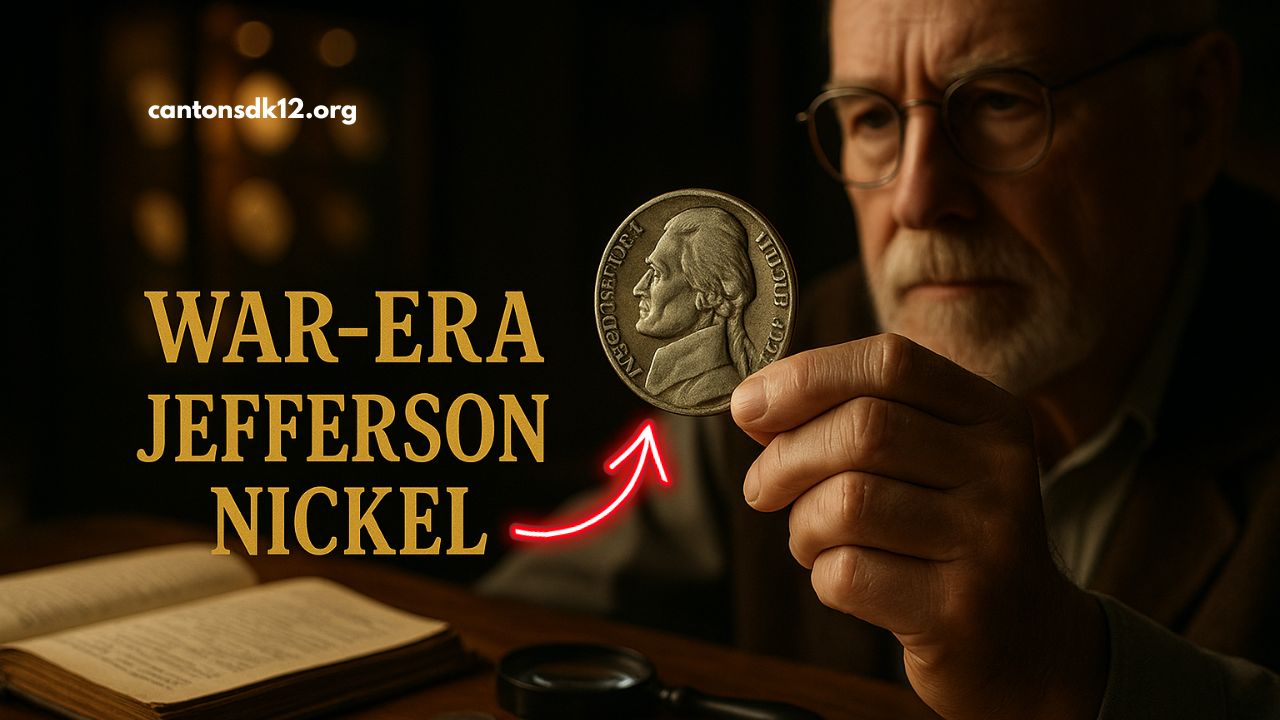During World War II, the U.S. Mint made a radical change to the Jefferson nickel that would accidentally create some of the most desirable treasures in American numismatics.
By removing nickel metal from the alloy to support the war effort, the Mint introduced a short-lived silver composition (1942–1945).
Within those years, a handful of rare varieties, extremely low-population top-grade examples, and dramatic minting errors turned otherwise humble five-cent pieces into coins worth thousands—sometimes five figures.
Here’s how one wartime Jefferson nickel earned its place among the most valuable coins ever chased by collectors.
Why the War Nickel Exists (and Why That Matters)
As nickel was needed for armor plating and other military uses, the Mint altered the standard 75% copper / 25% nickel alloy. From late 1942 through 1945, nickels were struck in a 35% silver / 56% copper / 9% manganese alloy.
To make them easy to identify in circulation, the Mint added oversized mintmarks (P, D, or S) above Monticello on the reverse—the first time the “P” mintmark appeared on U.S. coinage.
This unusual metal mix and distinctive layout created the perfect conditions for varieties and errors—and modern grading has revealed just how few pristine examples survived heavy wartime circulation.
The “One” That Shot Up in Value
Among wartime issues, the headline-grabbers tend to be:
- 1943/2-P Overdate (a visible 3 punched over a 2): a dramatic variety that commands four- to five-figure prices in high mint state.
- 1943-P “Doubled Eye” (Class VI doubled die obverse with clear doubling at Jefferson’s eye): scarce and highly coveted in top grades.
- 1944-D/S & 1945-P DDR (over-mintmark and doubled-die reverse varieties): elite pieces whose value jumps sharply with grade and eye appeal.
A single top-pop (highest-graded) example from these varieties—especially with strong strike and superb luster—can realize five figures at auction, putting it among the most valuable nickels and elevating wartime Jeffersons into the broader conversation of standout U.S. coins.
How Condition Turns Silver Nickels into Standouts
Scarcity isn’t the only driver—condition rarity is huge. The wartime alloy often produced soft strikes, making crisp steps on Monticello and sharp hair detail uncommon.
Coins graded MS66–MS67 (and higher) with booming luster, clean fields, and outstanding eye appeal are exceedingly rare, which is why collectors bid aggressively when such coins appear.
Pro tip: Even circulated war nickels carry silver value, but the massive premiums are reserved for gem uncirculated and variety pieces.
Quick ID: How to Spot a War Nickel in Change
- Dates: Late 1942, 1943, 1944, 1945
- Mintmark: Large P/D/S above Monticello on the reverse (not next to it)
- Look & Feel: Slightly different tone than regular nickels; many show light golden or gray patina from the silver alloy
Key Facts & Figures at a Glance
| Feature / Variety | Years / Markers | Why It’s Valuable | Typical Value Range* |
|---|---|---|---|
| War Nickel Composition | 1942–1945; 35% silver | Short, historic run; composition change | Silver melt for worn coins; premiums for higher grades |
| Large Reverse Mintmark | Big P/D/S above Monticello | First use of “P” mintmark; quick ID for silver issue | Adds desirability; confirms silver type |
| 1943/2-P Overdate | OBV: 3 punched over 2 | Dramatic variety, scarce in high grade | From hundreds in mid-grades to five figures in top pop |
| 1943-P “Doubled Eye” | Doubling at Jefferson’s eye | Popular variety with visible doubling | Similar pattern; strong premiums in MS66+ |
| 1944-D/S | D over S mintmark | Over-mintmark rarity | High four to five figures at elite grades |
| 1945-P DDR | Reverse doubling (MONTICELLO, steps) | Eye-catching spread; low population | Four to five figures in finest known |
| Top-Pop Gems (any date) | MS66–MS67+ with great eye appeal | Ultra low population reports | Auction record-setting for the series |
*Values depend on certification, grade, eye appeal, and market conditions.
What Makes One War Nickel “One of the Most Valuable”
When scarce variety meets top-tier grade and superb eye appeal, the result is explosive: bidding jumps from hundreds to thousands—and select coins reach five-figure territory.
Factor in the historical allure of WWII silver coinage and you get a perfect recipe for a coin that transcends its denomination and era.
How to Evaluate Yours
- Confirm it’s silver (large reverse mintmark).
- Check for varieties: overdate (1943/2-P), doubled eye (1943-P), D/S (1944-D), DDR (1945-P).
- Assess condition: minimal marks, strong luster, sharp details.
- Consider certification: grading by a top service can unlock full market value.
- Compare auction comps for similar grades/varieties before selling.
A wartime metal change, bold mintmarks, and a handful of remarkable varieties turned select Jefferson war nickels into blue-chip collectibles.
While many silver nickels trade close to melt value, the right combination of variety and gem grade can push a coin into the upper echelons of U.S. numismatics—explaining how a small, war-era five-cent piece became one of the most valuable coins collectors compete for today.
If you have sharp details, minimal marks, and a recognized variety, you might be holding a five-figure prize in the palm of your hand.
FAQs
Are all 1942 nickels silver?
No. Early 1942 nickels use the regular copper-nickel alloy. Silver “Type 2” begins later in 1942 and is recognizable by the large mintmark above Monticello.
Do war nickels always have high value?
All silver war nickels are worth more than face value, but the major premiums go to high-grade coins and notable varieties like the 1943/2-P and D/S issues.
Should I clean my war nickel before selling?
No. Cleaning can permanently damage the surface, lower the grade, and reduce value. Leave it as-is and seek professional grading if it looks exceptional.
